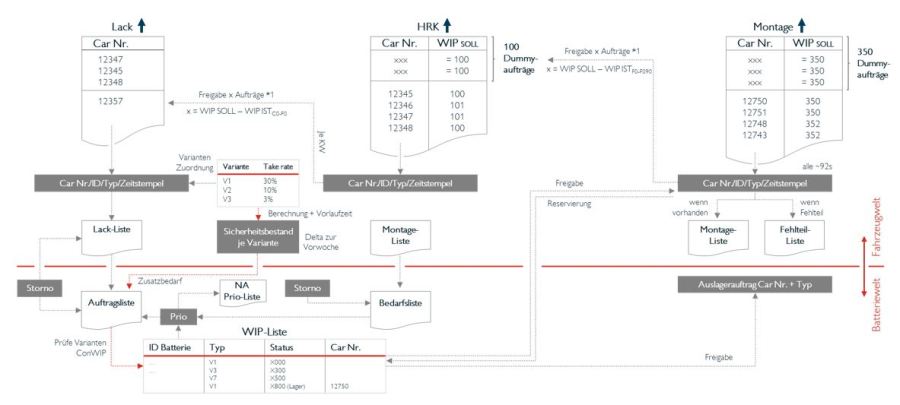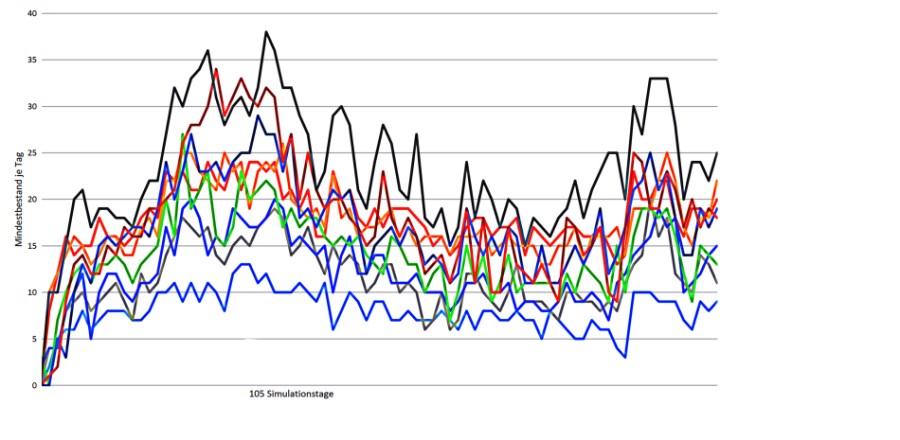Simulation of the production control of a battery production at an automotive OEM
A new product, a highly automated new manufacturing concept, new IT systems that have to be integrated into an existing system landscape, new requirements for safety and fire protection, the first internally manufactured component at the site that has to be delivered to JIS – so much uncharted territory harbours high risks and poses great challenges for the planning departments.
Proof of the efficiency of the control concept, worked out by BLSG operations experts, is now provided by an extensive information and material flow simulation.
Industry
Automotive OEM
Challenge
What must a control concept for just-in-sequence delivery of batteries to a vehicle production facility look like if battery production is highly automated, but the finished goods warehouse is limited due to the size of the components and yet 100% availability is to be guaranteed? How can it be ensured that the developed control concept will deliver the required performance in case of turbulences due to high volatile rework rates?
How do you minimise the storage space requirement in order to keep the necessary investment sum as low as possible?
Solution
One hundred percent availability with the lowest possible stocks of finished goods: In order to prove this performance of the production control concept, simulation experts at BLSG have recreated the control concept in detail in a material flow simulation using Plant Simulation.
For maximum significance of the simulation, the complex call-offs including the occurring turbulences within the vehicle production were also mapped.

Concept for the simulative mapping of vehicle call-offs
The simulation module was integrated as an important component into the existing overall simulation of battery production. As additional simulation modules, BLSG mapped the JIS control concept and the conveyor system supply of the battery modules.
Result
The performance of the control concept was demonstrated in several simulation experiments. The simulation also enabled an optimal parameter selection. This ensures that the right module package for the right battery is always available in the right sequence. In addition, the necessary investment sum could be reduced on the basis of the simulation results without jeopardizing the one hundred percent supply security.

Example result: Filling level of the finished goods warehouse for each variant
Within the scope of implementation, simulation can now be used permanently as an instrument to test every change in the planning status simulatively in the future and to evaluate its effects. In this way, the planning team gains security for all future challenges.

